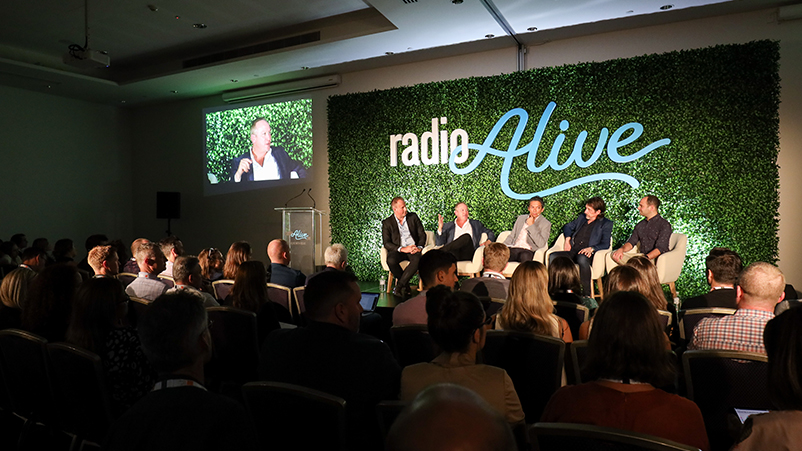Advertisers lagging behind new audio landscape

When the first keynote at Radio Alive, the radio industry conference, is 2GB’s Ben Fordham interviewing Hedley Thomas, creator of The Teacher’s Pet podcast, ahead of the mic drop fireside chat with Kyle Sandilands and Karl Stefanovic, you know that radio has reached quite the tipping point.
It was a packed room of more than 500 at Radio Alive 2019 and while traditional radio is still the industry staple, eyes are firmly fixed on the audio future. And that is podcasting, DAB+, streaming, smart speakers and catch up.
The Teacher’s Pet has 50 million downloads and counting, with Hugh Jackman touted to play Chris Dawson in the forthcoming movie. Harvey Norman cleverly integrated with the podcast simply by stamping its support of quality journalism.
Although radio listening still tops the GfK Australian Share of Audio research, accounting for 61.3 per cent of daily listening, others are growing at a far faster rate. Music streaming reached 15 per cent, while podcasts jumped into third place, almost doubling to a 7.3 per cent share of listening and moving ahead of owned music, which includes CDs and digital purchases, on 7 per cent.
The audio future permeated many of the day’s sessions, with the audience keen to hear about future developments and how to monetise the new world audio order.
As panelist Mark Lollback, Group M ANZ CEO said: “You own audio – fight hard for audio.”
The CEO panel, with Southern Cross Austereo’s Grant Blackley, HT&E’s Ciaran Davis, Nova Entertainment Group’s Cathy O’Connor and Macquarie Media’s Adam Lang, it seems, agree. Although they conceded that radio was not immune to the downturn in ad revenue, they were adamant about its resilience and the audio-led future.
“In the five years before 2019 radio was up 17 per cent plus there’s new opportunities for audio digitisation. Radio always performs over the longer term,” O’Connor said. Nova last week announced a podcasting partnership with News Corp (home of The Teacher’s Pet).
On the same day as SCA’s acquisition of 10 additional regional radio stations with Redwave, Blackley added: “90 per cent of our income with Redwave will come from audio based products. We are very comfortable in our area and will organically invest in podcasting, addressable advertising, DAB and make acquisitions. We want to do more in the audio spectrum.”
HT&E has divested its newspaper and outdoor assets to focus on audio. Certainly HT&E stamped its confidence in radio with its Kiis breakfast hosts Kyle and Jackie O, signing until 2024 for a mooted $50 million.
Davis said: “Today we are primarily an audio company with ambitions to grow the audio sector, we have a strong balance sheet and are focused on our audiences. We have invested in iHeart Radio.”
Concurrent announcements at the conference were a deal with Google to make it easy for listeners to find and listen to live streams of 300 local Australian radio stations on Google Nest devices. The Infinite Dial Australia 2019 research found that 2.7 million Australians (13 per cent) own a smart speaker.
The first monthly Australian Podcast Ranker was also launched on the day, providing a first look at Australia’s top 100 most downloaded and listened to podcasts in September 2019. These podcasts accounted for 10 million downloads in Australia during the four week reporting period.
The lag, however, in the new audio universe are advertisers. In a panel discussing podcasting, Group M’s Mark Lollback said most currently view it as an experimental channel: “Most of our clients are struggling with budgets, growth, performance and incremental reach. They want brand safety with a human listening and podcasting as an opportunity is really attractive…It’s at an inflection point, it will probably go from 30 per cent (Australians listening) to 70 per cent this time next year.
“Most clients’ heads are spinning trying to work out voice – 80 per cent of brands have a manual about their logo but only 8 per cent have a definition around voice…Not enough money is being spent on bringing people into podcasting.”
